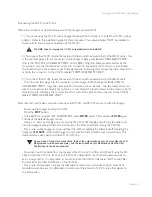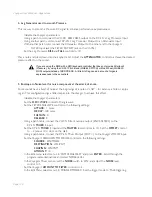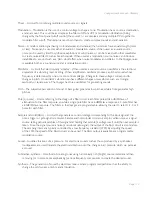
Page 106
Voyager User’s Manual - Appendices
Page 107
Voyager User’s Manual - Appendices
Now when you play a note, you should hear a noise component at the beginning of the note. Playing with a
combination of filter envelope times, filter cutoff, noise level, and Pedal/On Mod Buss amount will make this
effect more or less perceptible. Selecting ‘OSCILLATOR LEVELS’ as the Programmable Mod Destination can
yield some interesting effects as well.
Connecting other CV compatible equipment
We’ve covered some basic uses of the Voyager and the VX-351/VX-352 and CP-251. Other CV compatible
equipment like our Moogerfooger® analog effects can be incorporated to further expand the sonic palette.
Here are some things you could try with a Voyager, a VX-351and our Moogerfoogers:
- Use the Voyager’s Filter Envelope to control the Sweep of a MF-103 12-Stage Phaser.
- Use the Voyager’s Mod Wheel to control the Rate of the MF-103 12-Stage Phaser.
- Use the Voyager’s Mod Wheel to control the Mix on the MF-102 Ring Modulator.
- Use the Voyager’s Touch Surface to control the MF-102’s Carrier Oscillator Frequency.
- Use the Voyager’s Noise Output to add roughness to the MF-101’s Filter Cutoff.
- Use the Voyager’s Keyboard Pitch Output to control the VCO in the MF-107 FreqBox.
With all of the control options provided, the possibilities for sound creation are nearly limitless!
We’ve just scratched the Surface
The examples provided are just a few of the synthesis possibilities afforded by the Voyager and our line
of CV Expanders. Other CV compatible equipment can be connected as well; just keep in mind that you
should always connect a source to a destination, and that you shouldn’t combine multiple source CVs
without a mixer. We encourage you to experiment, as there are many possibilities for exploring synthesis
– whether you are trying to duplicate a sound or effect you heard, or if you are trying to make a sound that
nobody’s heard before. Remember - experimentation is part of the fun!










































